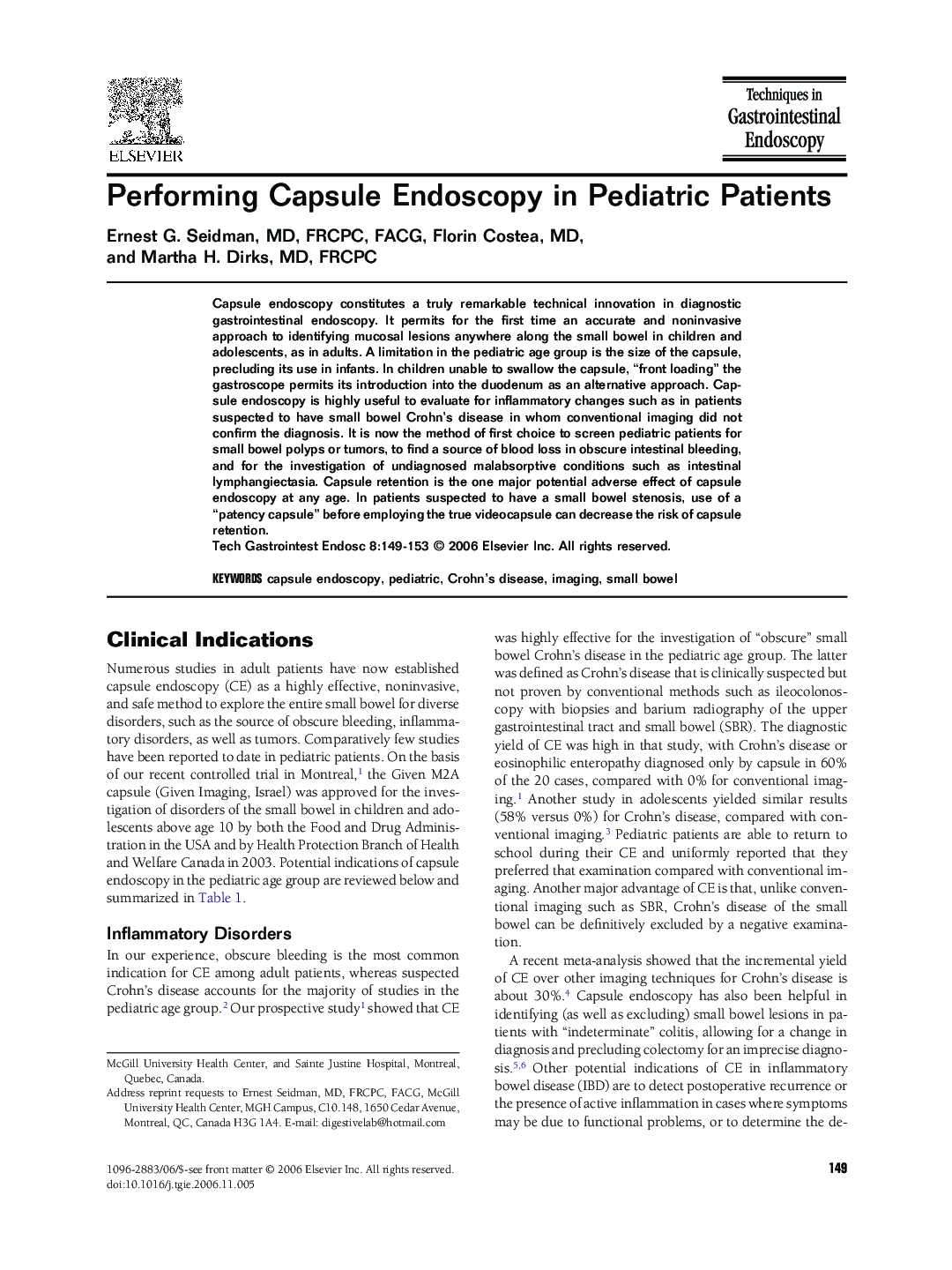| Article ID | Journal | Published Year | Pages | File Type |
|---|---|---|---|---|
| 3322916 | Techniques in Gastrointestinal Endoscopy | 2006 | 5 Pages |
Abstract
Capsule endoscopy constitutes a truly remarkable technical innovation in diagnostic gastrointestinal endoscopy. It permits for the first time an accurate and noninvasive approach to identifying mucosal lesions anywhere along the small bowel in children and adolescents, as in adults. A limitation in the pediatric age group is the size of the capsule, precluding its use in infants. In children unable to swallow the capsule, “front loading” the gastroscope permits its introduction into the duodenum as an alternative approach. Capsule endoscopy is highly useful to evaluate for inflammatory changes such as in patients suspected to have small bowel Crohn's disease in whom conventional imaging did not confirm the diagnosis. It is now the method of first choice to screen pediatric patients for small bowel polyps or tumors, to find a source of blood loss in obscure intestinal bleeding, and for the investigation of undiagnosed malabsorptive conditions such as intestinal lymphangiectasia. Capsule retention is the one major potential adverse effect of capsule endoscopy at any age. In patients suspected to have a small bowel stenosis, use of a “patency capsule” before employing the true videocapsule can decrease the risk of capsule retention.
Related Topics
Health Sciences
Medicine and Dentistry
Gastroenterology
Authors
Ernest G. MD, FRCPC, FACG, Florin MD, Martha H. MD, FRCPC,
